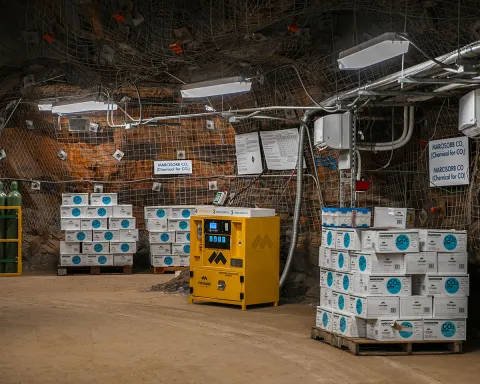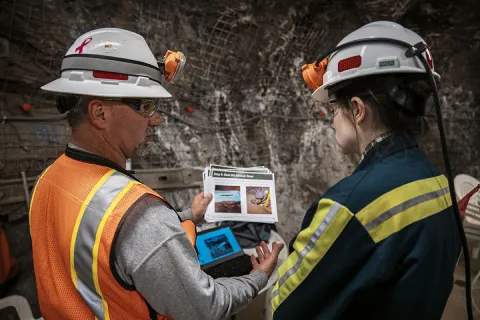Underground personnel capacity doubles at Sanford Lab
LBNF project upgrades refuge chamber, increases evacuation capabilities
Preparing Sanford Underground Research Facility (Sanford Lab) for its role as the Far Site for the largest physics experiment on United States soil demands a sizable workforce: the Fermi National Accelerator Laboratory (Fermilab) Long-Baseline Neutrino Facility (LBNF) team; contractors; and Sanford Lab infrastructure technicians, safety teams and support scientists, just to name a few. All these teams converge in Lead, South Dakota, to ready the facility for the Deep Underground Neutrino Experiment (DUNE), hosted by Fermilab.
With an increasing underground workforce, LBNF has undertaken multiple projects to ensure worker safety. Working closely with Sanford Lab staff, LBNF recently completed an upgrade to emergency systems, including areas of refuge and evacuation capabilities.
“This recent project doubles the number of people that can safely work underground at once, increasing the headcount from 72 to 144 people,” said Mike Headley, executive director of Sanford Lab. “This is a healthy increase that will allow us to support construction for LBNF.”
The main component of this project was the upgrade of the 4850 Level Refuge Chamber, designed to shelter people in case of an underground emergency in which immediate evacuation is not possible. Previously, the Refuge Chamber could provide shelter to 72 people for 96 hours. Now, using a newly installed compressed air management system (CAMS), an indefinite supply of breathing air will be available. The team also replaced former CO2 scrubbers with smaller, more efficient scrubbers as a secondary air source.

“With LBNF construction continuing to ramp up, we need greater capacity for workers underground—for the LBNF project as well as all the Sanford Lab maintenance crews and other science collaborations,” said Colton Clark, a Fermilab LBNF engineer who led the Refuge Chamber upgrade. “This project means we can safely bring more workers underground at once.”
Engineers also designed new railings for the Yates Shaft Work Deck, allowing the platform to be used in addition to the cage during an emergency evacuation. This upgrade allows for the timely evacuation of 144 people from the underground.
“Whether people need to take refuge underground or the space needs to be evacuated quickly, these upgrades allow us to ensure their safety in case of an emergency,” said Andrew Brosnahan, the Sanford Lab engineer who designed the Work Deck railings.

“We can expect to see a modest increase in the underground workforce in the near term,” said Headley. “As LBNF starts to see an increase in construction activities in 2020, and certainly as they transition into the main cavern excavation at the end of 2020, we'll see a noticeable increase in onsite personnel.”
DUNE will consist of two neutrino detectors placed in the path of the world’s most intense neutrino beam. One detector will record particle interactions near the source of the beam, at Fermilab in Batavia, Illinois. A second, much larger, detector will be installed more than a kilometer underground at Sanford Lab—1,300 kilometers (800 miles) from Fermilab. These detectors will enable scientists to search for new subatomic phenomena and potentially transform our understanding of neutrinos and their role in the universe.
Fermilab’s Long-Baseline Neutrino Facility will house the neutrino beamline at Fermilab and additional infrastructure as well as the far site DUNE detectors at Sanford Lab.
